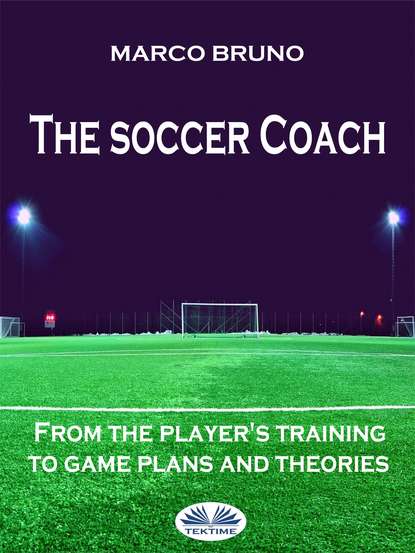По всем вопросам обращайтесь на: info@litportal.ru
(©) 2003-2024.
✖
The Soccer Coach
Настройки чтения
Размер шрифта
Высота строк
Поля
Stages of greater sensitivity of different motor skills and psychophysical qualities in the ages of six to fifteen.
Between 5 and 9/10 years the basic motor schemes are achieved; precision in movements has increased
Between 6 and 8 years improves balance quickly
Between 7 and 10 years improves speed of movement
Between 8 and 10 years the attitude to predict the speed and direction of moving objects grows
Between 9 and 10 years the maximum step frequency is reached
Between 9 and 11 years advances in sensory-motor coordination (eye-hand and eye-foot general dynamics) are obtained
Between 11 and 12 years the development of lateralization is completed
Between 12 and 18 years the muscle force doubles; for girls after 13 it does not substantially increase
Up to 14 years avoid passive mobility exercises, practically those performed with the help of others
After 10 years training for muscle stretching and mobility begins
Phases of sports training
Before listing the various phases of sports preparation it is necessary to remember that the chronological ages indicated are purely schematic; in the juvenile preparation it is much more serious and correct to consider the biological ages of the various subjects.
These indications are important in order to establish what the training proposals are and to be able to plan the activities
Principle of the finalized load
(Schonborn, 1984)
The road to be followed in youth training is to gradually increase the load. The training stimuli must be applied progressively and appropriately to development.
The recommended methodological sequence is to increase:
- first the frequency of training (defined as number of sessions);
- then the volume (defined as quantity of work);
- finally the intensity (defined as execution and loading speed).
(Ehlenz, Grosser, Zimmermann, 1983)
According to Martin (1982) sensitive phases find their moments of greater improvement in the ages indicated by the following diagrams.
It is not possible to train the coordinative and conditional abilities that have the same effectiveness at any age: no capacity can be exercised in the same measure at any age (Israel 1976).
With entry into puberty, there are decreases in performance or stagnation in the coordinating field (Sharma, 1993).
In boys with delayed development, are found coordination results better than those with early or normal development.
The periods of development in which trainability is very favorable for a certain motor capacity or class of sporting tasks (for example development of joint mobility, improvement of sporting technique), should be considered as sensitive phases for that class of tasks. We must pay close attention to the fact that there is an equal sensitivity between adequate and inadequate training methods. If you do not use the most favorable childhood years for the formation of coordination and sports technique, or you allow them to form wrong athletic behavior, the negative consequences will certainly be more conspicuous and therefore more lasting than in other periods.
Let's analyze what are the skills to be developed in the young athlete
Neutral capacity
Aerobic resistance
It is possible to develop it from pre-school age to be continued in the subsequent evolutionary stages, until reaching the period of "thrust" puberty that according to current knowledge seems to be the most favorable.
Early capacities
Coordinative
Rapid reaction and motor frequency
Articular mobility
Motor learning (with learning tasks that do not require high assumptions of maximum force or relative force),
Intermediate capacities
Toward the end of the primary school period and throughout the first pubertal phase, they should be considered with increasing attention:
Articular mobility
Quick force
Force resistance (in natural load)
Speed of movement, of locomotion and acceleration,
Late capacity
Maximum force
Anaerobic resistance
Quick force against oppositions
Resistance to force against oppositions.
Growth, development and maturation are terms that describe the changes that occur in the body until reaching adulthood:
Growth refers to an increase in the overall size of the organism or any part of the body.
Development refers to the differentiation of cells following functional specialization lines and the skills achieved in dealing with situations (skills, abilities, personality).





